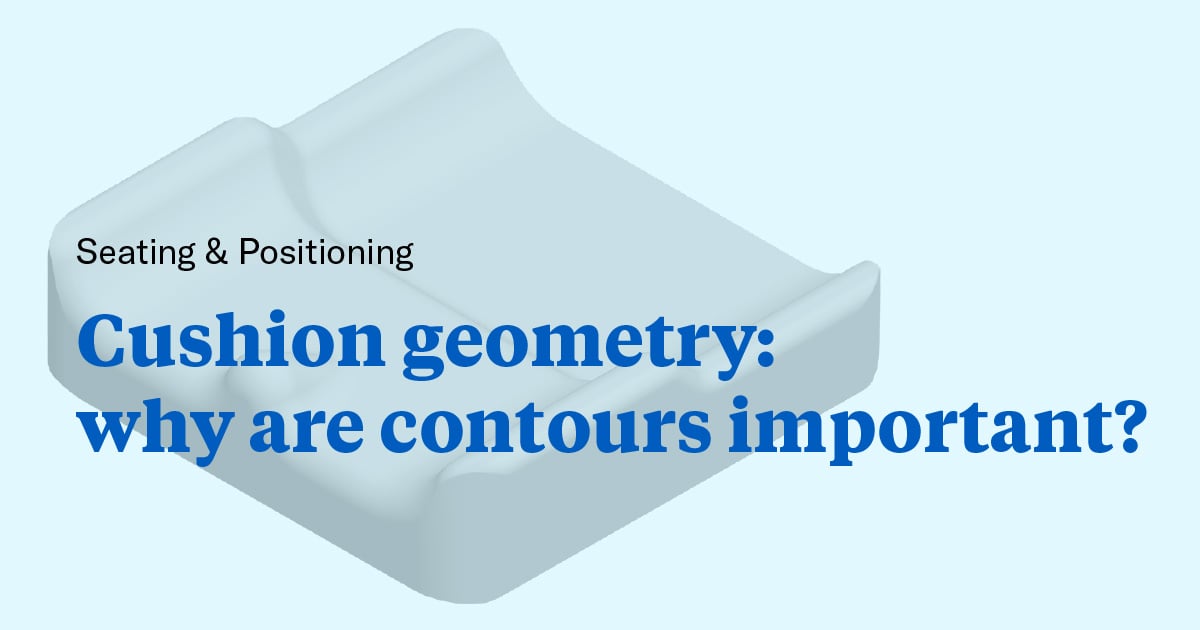Looking for more information on seating and positioning? Check out our digital page all about Permobil seating and positioning products here. This is part 5 of our series on seating and positioning. See part 1, part 2, part 3, and part 4.
When evaluating a cushion, it’s important to note whether it is linear or contoured. The geometry of the cushion can potentially impact transfers and freedom of movement. With contoured cushions, understanding what each contour is designed to do is key to meeting seating goals.
An example of using cushion contours to achieve a seating goal: What if my client has difficulty sitting upright over time?
Always consider the “why.” Often when someone gets into their wheelchair in the morning and looks great, then fatigues and starts slumping or needs to rest after a few hours, it’s because they have postural muscle weakness. We don’t think about this, but every day when we are sitting, postural muscles are working to keep us upright. When these postural muscles are compromised by injury or disease, they become fatigued more quickly.
The solution
One way to decrease the work required of the postural muscles is to provide a stable base of support in the cushion that is selected. This doesn’t mean that the cushion needs to be “hard”, it means that it should be supportive in the right areas. An offloading style cushion is often the most stable because of its inherent contours that provide the offloading.
How does it work?
Typically, the contours in the rear of the cushion load the trochanters which pushes the head of the femur into the acetabulum of the pelvis, which in turn stabilizes the pelvis. The best way to understand this is to feel it! Find a flat surface to sit on and place each hand, palms facing down, under the trochanters. Hold them there and rock side to side. While still rocking side to side, remove your hands and notice the difference in stability. By loading the trochanters, an offloading cushion provides pelvic stability that reduces the work needed from the postural muscles to sit upright over time.

